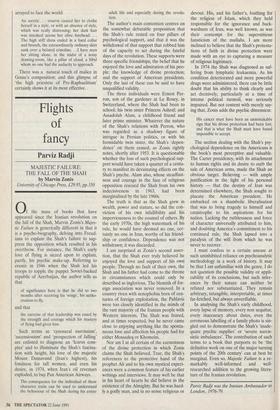Bright with names that men remember
Peter Quennell
PORTRAITS FROM LIFE by Edmund Gosse Scolar Press, £25, pp.200 In his later years, Sir Edmund Gosse, once Librarian to the House of Lords, was evidently well aware of the position he had long ago earned both as the author of Father and Son, a notable autobiography, and as a veteran English man of letters. His appearance was impressive, though friend- ly; but his talk was sometimes sharp-edged; and he had once, I am told, bidden farewell to Osbert and Sacheverell Sitwell with the words 'goodbye you delightful, deleterious pair!' Nor was he always benevolent when he spoke of famous predecessors; and I recollect that, on the single occasion I myself visited him at his large and stately London house and we passed a huge photograph of Tolstoy hung on the wall, which bore some flattering inscriptions, he muttered loudly, 'That old humbug!', before he accompanied me down the stairs.
Portraits from Life, however, an enjoyable collection of literary reminiscences, now edited by our American admirer, Ann Thwaite, has a largely sympathetic tone. Conspicuous among his portraits is an engaging tribute to Swinburne, an old friend and 'the most extraordinary man he had ever known'. While he was at work on the poet's life, he had encountered many tiresome problems; for the Swinburne fam- ily had very strongly objected to many of the details he included, such as his hero's alcoholism and cult of flagellation, that he considered worth recording; with the result that he felt obliged to recount them in a confidential paper which he afterwards lodged at the British Museum, whence they have since been resurrected. It was essen- tial, he informed the notorious book-dealer T. J. Wise, that the public at large should never learn `what a pig' the great man sometimes was.
In the present volume Swinburne's aber- rations are treated with the utmost can- dour. He drank incessantly and desperately, and seemed to Gosse to divide his hours between violent cerebral excite- ment and sheer immobility, mental and physical. His conversation, on the other hand, had some of the redeeming charac- teristics of his youthful verse, rapid, mea- sured, ornate and picturesque. He did nothing by halves; and his first and only amorous liaison, organised for his benefit by Rossetti with a literary equestrienne, originally sighted at a London circus, had a tragi-comic end. 'I can't make him under- stand', complained his mistress, 'that his approach should be much more powerful and direct', and that 'biting's no use!'
Of all the personages Gosse drew, Swin- burne was certainly the most remarkable and probably the most gifted. In one of his occasional essays, T. S. Eliot praised him as a poet exclusively devoted to the use of words; and here he emerges as a self- destructive adventurer, wholly devoted, despite his obvious failings, to the practice of his art. Other 19th-century luminaries Gosse depicts are Stevenson, a man he loved, Tennyson and Browning whom he revered, and Henry James, whose literary and social progress he observed across fashionable London dinner-tables, 'grave, extremely courteous', and an adept at the admirable art of listening, and — best of all, perhaps — Christina Rossetti, suitably arrayed to face the world:
An ascetic. . . reserve caused her to clothe herself in a style, or with an absence of style, which was really distressing; her dark hair was streaked across her olive forehead . . The high stiff dress ended in a hard collar and brooch, the extraordinarily ordinary skirt sank over a belated crinoline. . .1 have seen her sitting alone, in the midst of a noisy drawing-room, like a pillar of cloud, a Sibyl whom no one had the audacity to approach.
There was a natural touch of malice in Gosse's composition; and this glimpse of `the high priestess of Pre-Raphaelitism' certainly shows it at its most effective.



























































 Previous page
Previous page